Play Climate Change Bingo - #AI #ClimateChange #Education #mgshare
Watching news on television, reading articles about how the melting polar ice caps are changing the Earth’s mass enough to affect how our clocks, I have to admit, it’s a bit much. It almost makes you wish for a checklist, right?
- Heatwave
- Increased hurricanes
- Forced human migration
- Infectious diseases
I could go on…but, well, you get the idea.
Measuring Progress Towards an Objective
What’s the end of the world look like? When will it arrive? These are serious questions. They pop into my head every time I read an article on climate change, view videos of melting polar ice caps, and polar bears trying to figure out what happened to their habitat. This is what I got:

This image generated in Canva by Miguel Guhlin ( mguhlin@zirk.us ) with data from Perplexity.ai Pro version. Citation links appear at the end. View the Google Slides version here (or get a copy). View PDF version.
Prompt
With that in mind, I decided to ask Perplexity.ai Pro (get a referral from me for $10 off, if you want to check it out), the following prompt. I’ve incorporated follow-up prompts in the selection below. I didn’t spend a lot of time on this prompt, as you can see, since I was just playing around.
make a list of all the bad things that could happen with climate change. Each bad thing should be one to three words, max. Organize these in order of severity from 1 to 30 (30 being the worst) and by category (nature vs human). Without changes to current trends, estimate the year that each impact will appear.
The results were sobering. I’ve broken them up by Nature-related effects and Human-related effects, but obviously, what affects nature affects us all.
Nature-Related Effect
Nature-related effects and estimated timeline for impact:
- Wetland loss - Already occurring, will accelerate by 2050
- Coral bleaching - Already occurring, most reefs affected by 2030-2040
- Marine biodiversity loss - Already occurring, significant losses by 2050
- Ocean acidification - Already occurring, significant impacts by 2050
- Coastal erosion - Already occurring, will accelerate by 2050
- Fishery declines - Already occurring, significant declines by 2050
- Aquaculture impacts - Already occurring, significant impacts by 2050
- Biodiversity decline - Already occurring, accelerating by 2030-2040
- Ecosystem disruption - Already occurring, widespread by 2050
- Habitat destruction - Already occurring, accelerating by 2030-2040
- Species extinctions - Already occurring, accelerating by 2030-2040
- Spread of invasive species - Already occurring, accelerating by 2030-2040
- Reduced ecosystem services - Already occurring, significant impacts by 2050
Human-Related Effects
- Saltwater intrusion - Already occurring in some areas, widespread by 2050
- Coastal flooding - Already occurring, will accelerate by 2050
- Sea-level rise - Already occurring, major impacts by 2050-2100
- Increased drought - Already occurring in some regions, widespread by 2050
- More hurricanes - Possible increase by 2050, definitive increase by 2100
- Extreme weather - Already occurring, more frequent and intense by 2050
- Heavier downpours - Already occurring in some areas, widespread by 2050
- Increased wildfires - Already occurring, more frequent and intense by 2050
- Infectious diseases - Some impacts by 2030, significant spread by 2050-2070
- Deadly heatwaves - Increasing by 2030, common in many areas by 2050
- Food insecurity - Impacts felt by 2030, more severe and widespread by 2050
- Agricultural losses - Increasing by 2030, major losses by 2050
- Threats to human health - Increasing by 2030, significant impacts by 2050
- Infrastructure damage - Increasing by 2030, severe and costly by 2050
- Economic losses - Increasing by 2030, major drag on economies by 2050
- Forced human migration - Increasing by 2030-2040, large-scale by 2050-2100
- Resource conflicts - Possible by 2030-2040, more likely and severe by 2050-2100
Citations
Nature-related effects:
- Wetland loss[1]
- Coral bleaching[2][4]
- Marine biodiversity loss[4][7][8]
- Ocean acidification[4][7][8]
- Coastal erosion[1][2]
- Fishery declines[4][7]
- Aquaculture impacts[4][7]
- Biodiversity decline[9][10][11][12][13]
- Ecosystem disruption[9][10][12][13]
- Habitat destruction[10][12][13]
- Species extinctions[9][10][12][13]
- Spread of invasive species[12][13]
- Reduced ecosystem services[9][13]
Human-related effects:
- Saltwater intrusion[1][2]
- Coastal flooding[1][2]
- Sea-level rise[1][2][3]
- Increased drought[3][5]
- More hurricanes[3][5]
- Extreme weather[3][5]
- Heavier downpours[5]
- Increased wildfires[5]
- Infectious diseases[3]
- Deadly heatwaves[3][5]
- Food insecurity[3]
- Agricultural losses[3]
- Threats to human health[9][10][11]
- Infrastructure damage[5]
- Economic losses[9][11]
- Forced human migration[3][11]
- Resource conflicts[3][11]
Citations:
- [1] www.nature.com/collectio…
- [2] www.nrdc.org/stories/w…
- [3] www.ncbi.nlm.nih.gov/pmc/artic…
- [4] www.nature.com/articles/…
- [5] www.epa.gov/climatech…
- [6] climate.ec.europa.eu/climate-c…
- [7] science.nasa.gov/climate-c…
- [8] www.epa.gov/climatech…
- [9] climatechange.chicago.gov/climate-i…
- [10] www.who.int/news-room…
- [11] health2016.globalchange.gov/climate-c…
- [12] www.nrdc.org/stories/w…
- [13] https://serc.carleton.edu/integrate/teaching_materials/food_supply/student_materials/933
- [14] www.epa.gov/climate-i…
- [15] www.whitehouse.gov/ostp/news…
- [16] www.un.org/en/climat…[1] www.nature.com/collectio…
Facebook snooped on users’ Snapchat traffic
Wow, this is…so wrong.

Given that Snapchat encrypted the traffic between the app and its servers, this network analysis technique was not going to be effective. This is why Facebook engineers proposed using Onavo, which when activated had the advantage of reading all of the device’s network traffic before it got encrypted and sent over the internet. “We now have the capability to measure detailed in-app activity” from “parsing snapchat [sic] analytics collected from incentivized participants in Onavo’s research program,” read another email. …newly released documents reveal how Meta tried to gain a competitive advantage over its competitors, including Snapchat and later Amazon and YouTube, by analyzing the network traffic of how its users were interacting with Meta’s competitors. Given these apps’ use of encryption, Facebook needed to develop special technology to get around it
via TechCrunch article, **Facebook snooped on users’ Snapchat traffic in secret project, documents reveal** by Lorenzo Franceschi-Bicchierai@lorenzofb / 4:05 PM CDT•March 26, 2024
Remembering Daniel Kahnemann: System I and II Thinking Quotes
Bummer. Daniel Kahneman died. He was the author of Thinking, Fast and Slow. You can read an overview here. In a New York Times article about Kahneman, Steven Pinker said of Daniel’s work:
“…human reason left to its own devices is apt to engage in a number of fallacies and systematic errors, so if we want to make better decisions in our personal lives and as a society, we ought to be aware of these biases and seek workarounds. That’s a powerful and important discovery.” ( source )
Over the years, I’ve mentioned Kahneman’s work and it’s been a great way to understand how human brains work. I even mentioned him in one of my most recent presentations on Critical Thinking Made Simple.
Quotes
Some AI garnered quotes from Daniel Kahneman:
| Quote | Source | URL |
|---|---|---|
| “System 1 operates automatically and quickly, with little or no effort and no sense of voluntary control. System 2 allocates attention to the effortful mental activities that demand it, including complex computations.” | Thinking, Fast and Slow by Daniel Kahneman | View source |
| “This is the essence of intuitive heuristics: when faced with a difficult question, we often answer an easier one instead, usually without noticing the substitution.” | Thinking, Fast and Slow by Daniel Kahneman | View source |
| “Intelligence is not only the ability to reason; it is also the ability to find relevant material in memory and to deploy attention when needed.” | Thinking, Fast and Slow by Daniel Kahneman | View source |
| “A reliable way to make people believe in falsehoods is frequent repetition, because familiarity is not easily distinguished from truth.” | Thinking, Fast and Slow by Daniel Kahneman | View source |
| “We are prone to overestimate how much we understand about the world and to underestimate the role of chance in events.” | Thinking, Fast and Slow by Daniel Kahneman | View source |
| “Odd as it may seem, I am my remembering self, and the experiencing self, who does my living, is like a stranger to me.” | Thinking, Fast and Slow by Daniel Kahneman | View source |
| “You are not the same person at all times. As your mood varies, something you are of course aware of, some features of your cognitive machinery vary with it, something you’re not fully aware of.” | Noise: A Flaw in Human Judgment by Daniel Kahneman, Olivier Sibony, Cass R. Sunstein | View source |
Psychics and Pseudoscience (PASTOR)
In every town, there’s a street with a sign board with a huge hand. The hand beckons passersby, hoping to attract their attention. The hope of a response that provides direction draws people in. The desire to get certain information about an uncertain future is a powerful pull for some folks.

via **[@flash@mastodon.world](https://zirk.us/@Flash@mastodon.world/112151364182117703)**
My Faith Shielded Me
Going to university for my “freshman/sophmore” year in Wichita Falls, Texas, I remember a certain street that had a palmistry sign up in front of a decrepit building painted white, edged with decay. My roommate at the time, a Born Again fundamentalist Christian, would rave about psychics, recalling Scripture denouncing psychics and witches.
As a Catholic at 17 years of age, well-aware of exorcism lore, I wasn’t interested in what a psychic had to say. It wasn’t because I had engaged my critical thinking faculties to shield me, but rather, my unwillingness to open the door to evil spirits. I remember thinking, at that time, that evil has no hold on those who don’t believe in its power, it’s impotency in the face of the Spirit. At seventeen, I was well-indoctrinated. Brainwashed. Unfortunately, so was one of my friends, whom I met later down the road as an 18 year old.
A Church on Every Corner, A Psychic Network
A year later, while at home from college, I remember one of my fellow theatre ushers (free movies in a time before Netflix, wouldn’t you know, were great then) who found himself obsessed with psychics. He graduated from psychics to television pastors, asking me if I would ever send money to them to gain their benefits.
“No way, Mike, all they want is your money” I said. Just this past weekend, I had occasion to think of the conversation as I drove past four mega-churches on the highway. And, psychics and palm readers abound…everywhere.
“Are they connected?” I wondered. Does our penchant for spirituality prepare the mind for psychics, crystal vendors, and horoscope prognosticators?
Did You Know? The psychic services industry in the United States generates approximately $2.3 billion, employs over 85,000 people who make $1.5 billion in total wages a year.
Of course, I never did send my money to television pastors…for the same reason I’d never invest in a psychic or palmistry. These are both matters of fantasy and fiction. Not only that, but there was some strong scripture in Deuteronomy that I couldn’t ignore at that age. Today, I remain amazed at how well these fictions grip the mind.
We should all know better than boys swayed by a bit of artistry and pseudoscience and (fake) magic.
Problem
The problem, as you might imagine, is that psychics offer to reveal a fundamental truth about our future to our present self. The sources of insight often lie in the nether region of the unknown, the place of demons and witches, of spirits and things that go bump during a seance. None of these are backed by empirical evidence, and they may mislead people like my fellow theatre usher. While love is a mystery at 18 years of age, and whether it lies in ones future, there are other areas that may lead away from what has been learned over time.
Amplify
Lacking a critical thinking process, reliance on psychics and pseudoscience results in problems well beyond who we are as individuals. They can impact our families, society, and leave everyone with a sense of, “Who can I trust? What can I trust?” I suspect that is what opens us all up to foolishness. Consider the logic of a believer when engaging with psychics. Psychics and the insights from a psychic are poisoned fruit, as well as forbidden. They are prognostications, that while true or subtle lies, lead to our ultimate downfall as believers. There becomes a whole other world of spirit, good and bad, vying for our attention and interests. All without a shred of evidence except belief.
Here are some ways to evaluate claims and assumptions, no matter who the source is, that you can use: FLOATER, CRITIC (also for information evaluation), and processes like those suggested by CriticalThinking.org.
The XYZ Made Me Do It
It’s so easy to blame someone else for our own actions, or lack of action. I’m reminded of the Kalamazoo Uber driver who saw a demon in his app, which compelled him to murder. While the consequences may be less dramatic, it’s easy to see the issues that arise when you believe something with origins outside empirical science are moving you. From personal consequences (e.g. spending money on psychics, fake drugs to not proven to do anything but sold via anecdote or someone you trust) to society (e.g. climate change), it can get pretty dire.

Story/Solution
“Please, oh my God, what’s happening to me?” said my friend as he staggered into my house. My wife (newly married) came over to see what was happening. As my friend babbled an incoherent account of how he was being persecuted by evil spirits, I realized that his mind had finally snapped. His desire, like that of many others, was to find purpose in life, to be important, to find love. And, all those desires, those needs, had not been met.
Once he had calmed down, I checked with a trained mental health professional (the husband of one of my older friends from electronic bulletin board services (BBSs)), and he made some specific suggestions, which I followed. Unfortunately, my friend decided to not take advantage of those, and I ended up escorting him to my door. I never saw him again. Since I moved shortly afterwards, starting a new life with my wife, I don’t know what happened to him.
Now, looking back, I realize that if someone had shared with him early on a critical thinking toolkit, enhanced his scientific literacy, enabled him to distinguish between claims with empirical support, and those without, he would have been able to withstand the insecurities of growing up as a young person. To the degree I was a skeptical thinker, trained in the Catholic tradition at the time, I was able to avoid the roadblocks to happiness he sought out and wallowed in, miserable and despairing. But I had access to many texts…and some of my father’s practical nature sank in.
The older I get, the more I realize what a disservice we do to young people when we bathe them in the fakery, giving power to psychics by crediting the evil of the power from whence psychics obtain their insights. All of it done to aggrandize the power of the “good.” How my friend’s story ended, I don’t know. I can only hope that somehow, he found a way through the mystical maze of torture he found himself in.
Transformation
By embracing a more scientifically informed point of view, he could have focused himself on gathering information, transforming it into knowledge, and then making decisions based on scientific consensus. While not perfect, it’s much better to be an empowered skeptic rather than a pseudoscientist peddling falsehood and lies, even when benevolent. And, when encountering a question for which there is no answer, accepting that this is an area one knows nothing about. Then, begins the process of formulating a hypothesis, gathering evidence, inviting others to test your findings, and so on.
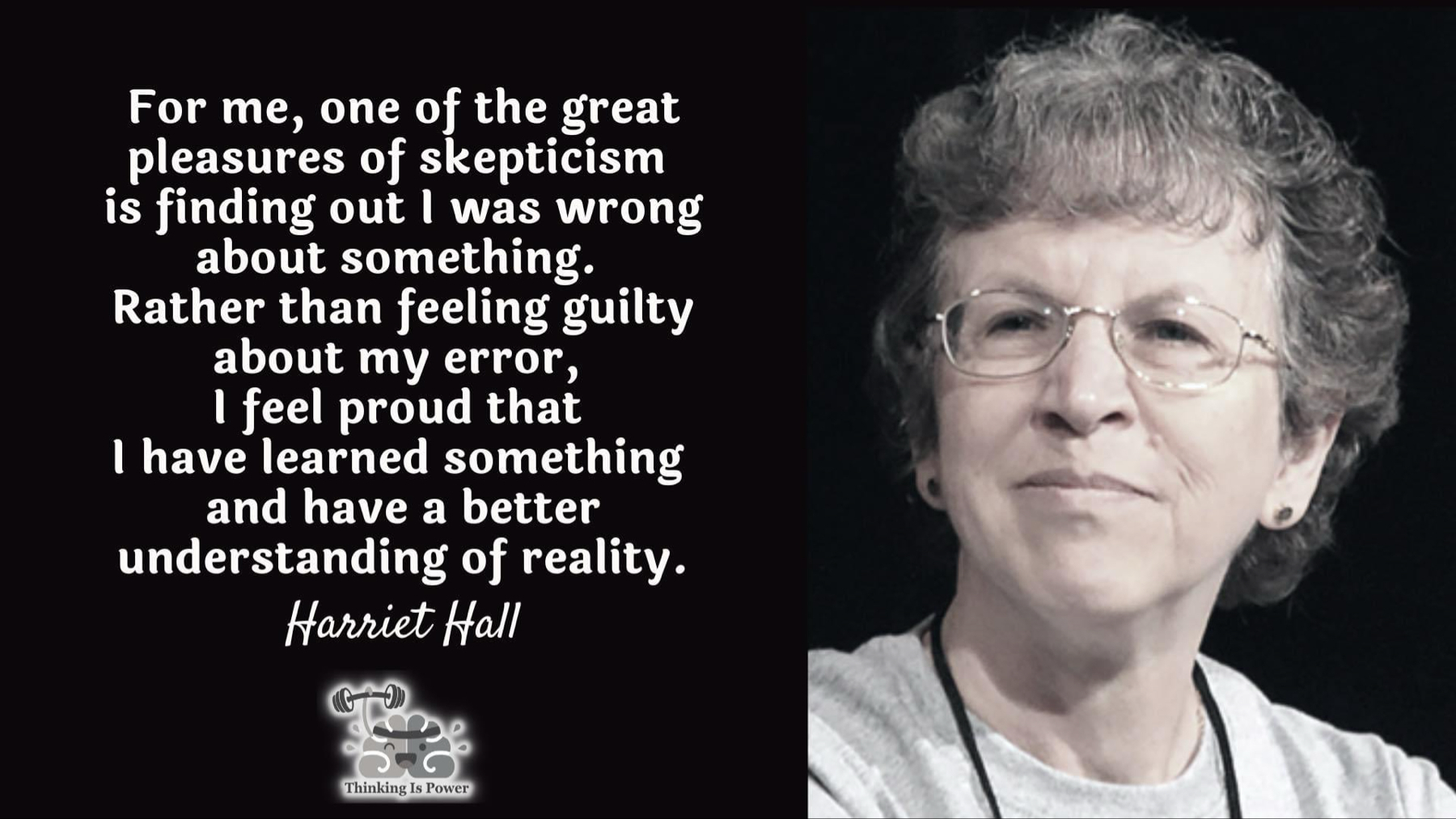
Offer
Imagine what would happen if, in schools and churches, we prioritized skeptical thinking, demystifying the scientific process, encouraging scientific literacy. If our children learned media literacy, critical thinking, and built on that natural curiosity all humans enjoy when young.
- How do I know this?
- How do you know this?
- What evidence is there?
- Is the explanation that you have constructed about this evidence accurate?
- What are some ways I can question what I hold true?"
Every organization needs to offer evidence-based reasoning approaches for their respective fields of study or endeavor. In this way, all of us are able to put aside our dependence on beliefs in fantastical creatures who seek to trick us with partial truths offered via a psychic or reading of palms, tea leaves, and/or entrails.
Response
The response I wish I had had when a young man was to be better equipped to seek out reliable sources of information, helping others to engage more critically. At the time, I relied on my Catholic upbringing about the evil of psychic sources to dissuade myself and others, when possible, of seeking out palm readers and psychics.
Now, I see that if I had been better prepared, I could have relied on critical thinking, questioning the validity of these preternatural claims. I know that many still fight principalities and powers, engaging in a spiritual battle in their minds that has no basis in empirical evidence or science.
Today, I wonder what my life would have been like WITHOUT spiritualism. What would it have been like with the benefit of critical thinking and evidence-based reasoning? It’s then that I wonder, what would a nation of skeptical thinkers be able to accomplish?
A Parting Thought
I really enjoyed this page’s introduction:
Most of us are not what we could be. We are less. We have great capacity. But most of it is dormant; most is undeveloped. Improvement in thinking is like improvement in basketball, in ballet, or in playing the saxophone. It is unlikely to take place in the absence of a conscious commitment to learn.
As long as we take our thinking for granted, we don’t do the work required for improvement.
Development in thinking requires a gradual process requiring plateaus of learning and just plain hard work. It is not possible to become an excellent thinker simply because one wills it. Changing one’s habits of thought is a long-range project, happening over years, not weeks or months. The essential traits of a critical thinker require an extended period of development.
How, then, can we develop as critical thinkers? How can we help ourselves and our students to practice better thinking in everyday life? source: Critical Thinking in Everyday Life: 9 Strategies
I imagine that becoming a critical thinker IS hard work, and it should be taught in schools…not left up to circumstance, privilege, and self-discovery.
AIDA: Scientific Consensus
I honestly hadn’t ever heard the concept of scientific consensus before reading about it while exploring Melanie Trecek-King’s Thinking Is Power website. There’s so much that seems to have been left out of my education, and I wouldn’t be surprised a lot of folks haven’t heard about it either.
These days, I ask, “What’s the scientific consensus on XYZ?” where XYZ is whatever claim is being pushed, sold, or peddled. Scientific consensus is worth a closer look.
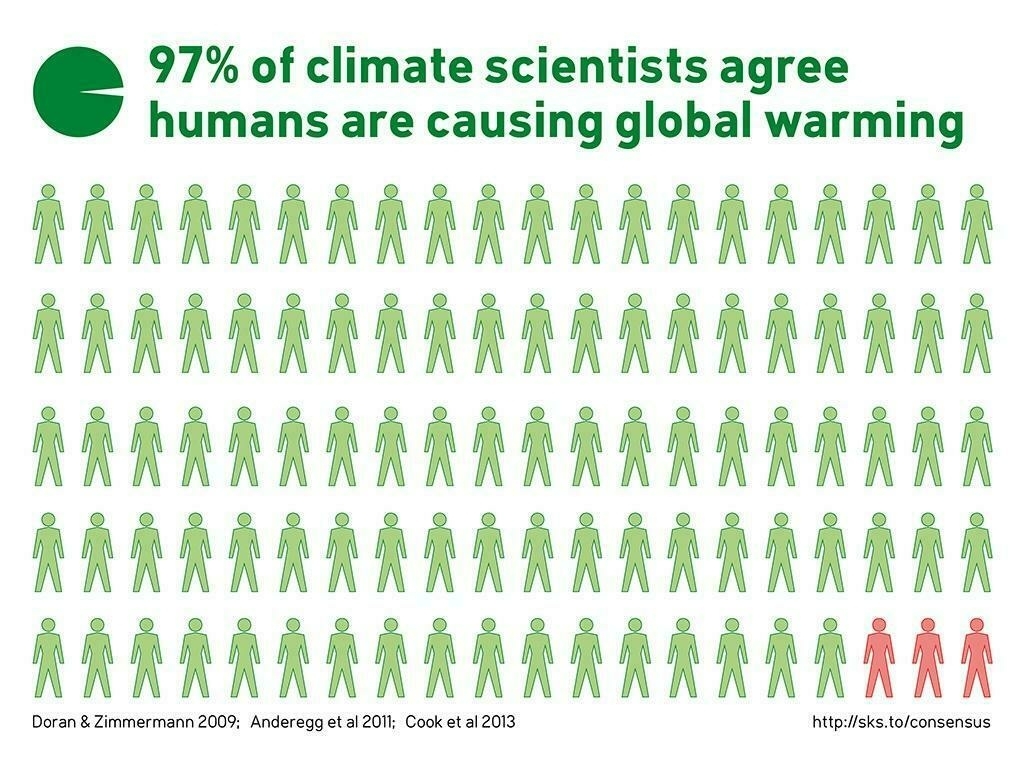
via Triple Pundit
Attention: Fight Falsehood
You’d think that, today, with so much access to information, it would be easier to tell truth from lie. You’d think that truth sparkles like a gem, while lies gather like stacks of coal. But these days, lies sparkle more than truth. Pseudoscience, false claims, are also designed to fool people. One tool to fight falsehood is the concept of scientific consensus.
Interest: What Is Scientific Consensus?
When I think of what consensus is, it seems like it’s about people agreeing and compromising. But that’s not scientific consensus. Scientific consensus makes sense as a preponderance of evidence resulting from research, experiments, and peer review…and, all the experts who study the science of a topic are convinced by that evidence that something is true. Scientific consensus doesn’t mean that facts are written in stone, never-changing. But it does mean that what is agreed on IS backed up by evidence, can change in the face of new evidence. So, while there is no 100% surety, it’s the best evidence of what we know agreed upon by experts.
Desire: The Strength of Agreement
When I accept the evidence in alignment with scientific consensus, I am joining real experts in the field. As such, false claims that aren’t backed up by real scientific evidence can be disregarded. The strength of that agreement is comforting in a way that fake beliefs can’t challenge or measure up to.
Action: Stand with Science
As you watch television, and that commercial for XYZ drug comes on, make sure you use scientific consensus to separate fact from fiction, truth from lie. Before you click or tap the share button on Facebook for an amazing story, take a moment to find out what the scientific consensus is. At first, you may feel disappointment that yet another claim is false. In time, though, you will come to a different perspective that aligns what you choose to agree with with the scientific consensus.
MyNotes: The Scientific Consensus on a Memory Aid Drug
Prevagen…a proven memory aid to help you remember stuff, or a well-funded example of pseudoscience? Consider this popular commercial sharing an anecdote from someone who claims to be a real person (aren’t we all?):
Of course, Greg Faley IS a real person. He’s starring in a commercial for Prevagen. Seeing these anecdotes supporting Prevagen is irritating. They pop up as one of the many commercials while I’m watching television, and they tick me off. At the very least, these are paid statements on behalf of a scientifically unproven drug that is geared to appeal to the fears of older people. And, that’s wrong.
Anecdotes as Evidence
Melanie Trecek-King (Thinking Is Power) points out we have to be on guard against anecdotes:
Anecdotes are personal experiences that are used as evidence for a claim. Our brains jump to conclusions and assume the experience is a good indicator of what’s typical and even that events are due to causation. Vivid and emotional stories are often particularly convincing and memorable.
Many people think that anecdotes are a sure-fire way of knowing what’s true. Indeed, it can be quite difficult to convince someone that they might be wrong. But anecdotes are infamously unreliable. (source)
She suggests there are four reasons for that, including:
- We can’t trust our own experience
- Anecdotes aren’t controlled
- Anecdotes aren’t typical, varying from person to person. As Trecek-King puts it, “using single observations can mislead us into thinking something is typical when it’s not. For that, we need statistical evidence.”
- People lie
If you can’t trust experience and anecdotes, what can you trust? Melanie Trecek-King suggests statistics. She suggests that when you try to find out what’s real and what’s not via Google, try to find the scientific consensus. With access to AI tools like Perplexity, it’s a lot easier to get at what the scientific consensus is.
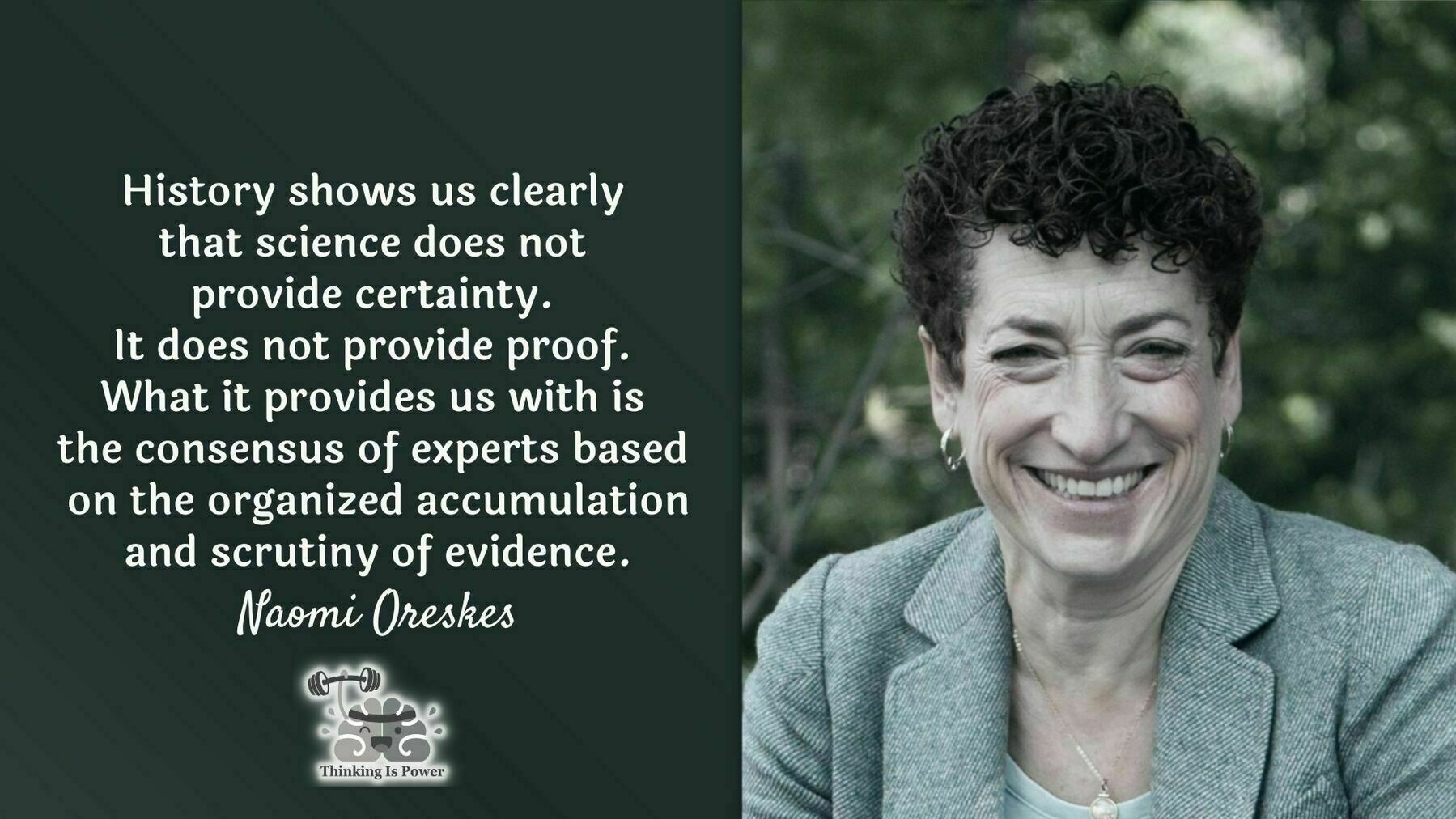
via How To Do Your Own Research
What’s the Scientific Consensus?
Every time I see Prevagen commercial on television, I’m intrigued. Wouldn’t it be neat to have a drug that could magically restore my memory? No longer would I reach for a word and have it just out of grasp. However, the scientific consensus reveals this miracle memory restorer leaves a lot to be desired.
Here’s a description of what scientific consensus is:
“scientific consensus” needs to be based on evidence and converging lines of existing evidence are a prerequisite, distinguishing a knowledge-based scientific consensus from a simple agreement. To quote John Reisman, “Science is not a democracy. It is a dictatorship. It is evidence that does the dictating.” Because of that, a few disagreeing contrarians on the fringe don’t really matter unless and until they can show evidence of comparable weight which explains the existing data and observations better. The weight of evidence is what matters (source).
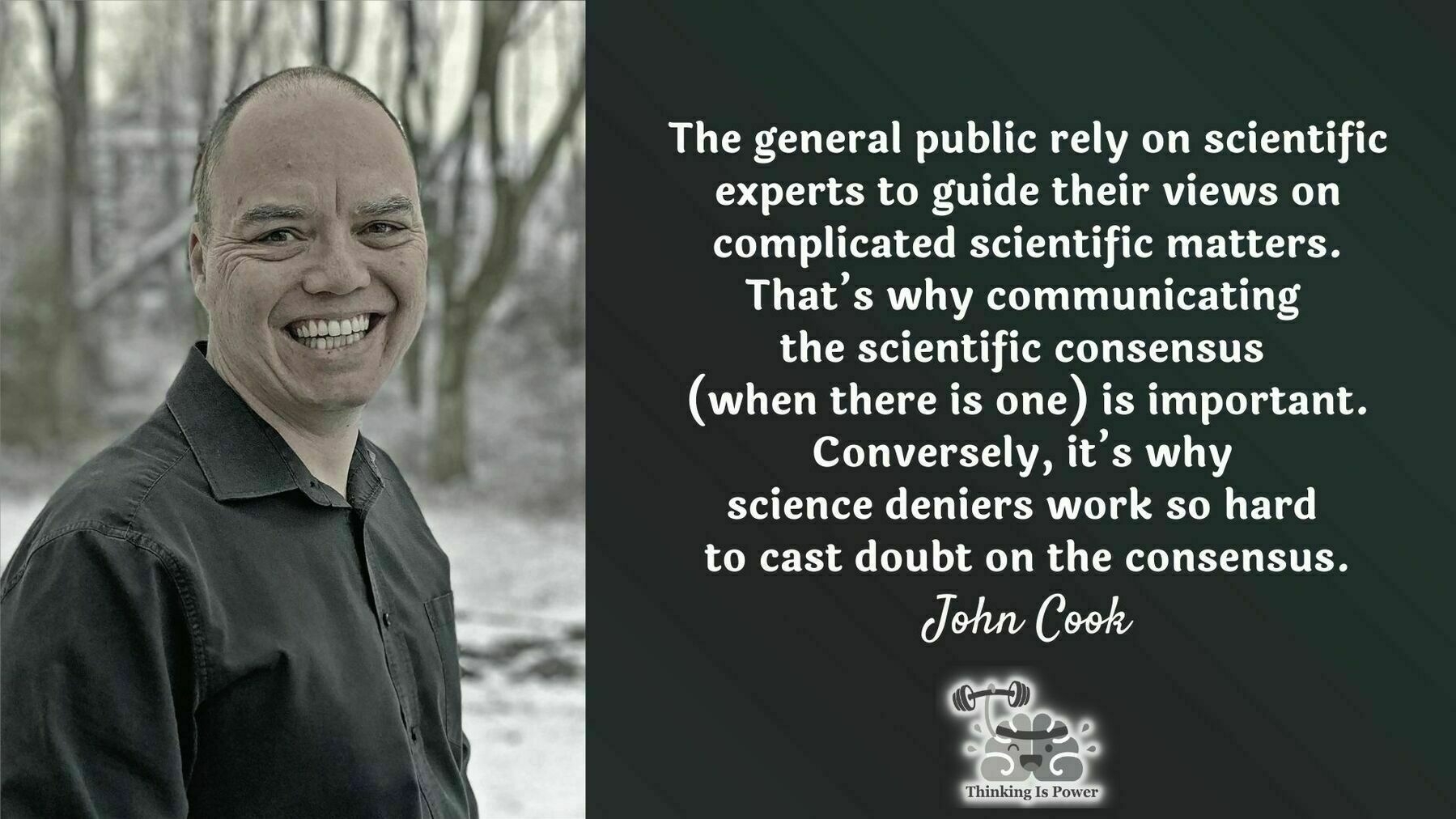
via How To Do Your Own Research
The Scientific Consensus on Prevagen
In summary, the scientific consensus on Prevagen is that there is insufficient evidence to support its claims of improving memory or cognitive function. Consumers and healthcare professionals are advised to approach Prevagen with caution and to prioritize evidence-based interventions for cognitive health. The scientific consensus on Prevagen, a dietary supplement marketed to help with mild memory loss associated with aging, is largely skeptical due to limited and questionable evidence supporting its efficacy and safety. Prevagen contains apoaequorin, a protein originally found in certain types of jellyfish, and is promoted as supporting brain health and memory improvement.
However, several key points emerge from the analysis of available information:
-
Limited and Questionable Efficacy: The evidence supporting Prevagen’s claims is not robust. A clinical study cited by the manufacturer has significant limitations, casting doubt on the merits of the evidence presented. The study’s results are not convincingly supportive of Prevagen’s effectiveness in improving memory or cognitive functions[2].
-
Concerns Over Bioavailability and Safety: Experts have raised concerns about whether apoaequorin can be effectively absorbed by the human body and whether it can cross the blood-brain barrier to exert any potential effects on brain function. Additionally, there have been reports of adverse events, including seizures, strokes, heart arrhythmias, chest pain, and dizziness, associated with Prevagen’s use, although these reports alone do not prove causation[5].
-
Regulatory and Legal Challenges: Prevagen has faced scrutiny from regulatory bodies and has been involved in legal battles over its marketing practices. The Federal Trade Commission (FTC) and New York State Attorney General charged Quincy Bioscience, the maker of Prevagen, with fraud, alleging false advertising and unsubstantiated claims about the product’s efficacy. Despite these challenges, Prevagen remains on the market as a dietary supplement, which is subject to less stringent regulatory oversight than pharmaceuticals[3][7].
-
Skepticism from the Medical and Scientific Community: The medical and scientific community remains skeptical of Prevagen’s claims, largely due to the lack of compelling, peer-reviewed scientific evidence supporting its effectiveness. The FDA has curbed unfounded memory supplement claims, emphasizing the need for evidence-based validation of such products[1]. Furthermore, pharmacists' recommendations of Prevagen, as indicated by surveys, are likely influenced more by the product’s extensive advertising rather than solid clinical evidence of its efficacy[2][4].
In summary, the scientific consensus on Prevagen is that there is insufficient evidence to support its claims of improving memory or cognitive function. Consumers and healthcare professionals are advised to approach Prevagen with caution and to prioritize evidence-based interventions for cognitive health.
Citations:
Pencil and Paper...Rules?
Earlier this week, I had a chance to revisit my thoughts on educational technology in the classroom.
“We need to get back to pen and paper,” said a colleague today. The statement was a reflection of some of the conversations going on at the State level. A part of me cringed a bit to hear that, since it suggests educational technology is something folks are backing away from as a cost-effective solution in schools.
Cost Effective?
Then, I realized, educational technology has seldom been the cost-effective solution. Instead, it’s been the solution most people reach for when they want to seem…
- innovative (change that adds value)
- engaging (for student learners)
- exciting
- fun and thrilling
- like they are preparing children for a future of unknown possibilities
There aren’t a lot of innovations that work in schools. Maybe it’s time to rethink being innovative and make a beeline back to what works?
A February 2024 report about a research-and-development program inside the Department of Education …shows many interventions made no difference_
The failure rate was 74 percent. Under this program, called Investing in Innovation or i3, the federal government gave out $1.4 billion between 2010 and 2016 to education nonprofits and researchers for the purpose of developing and testing new ideas in the classroom.
…only 26 percent of the innovations yielded any positive benefits for students and no negative harms
The truth is, technology is a flash in the pan innovation because it’s always changing. What’s innovative today isn’t tomorrow. It simply becomes part of the woodwork. Or it disappears. Consider Microsoft Zune vs the iPod. It doesn’t matter now, right? The Zune was a failure at launch, while the iPod was an amazing success. But both are now obsolete.
What Did You Learn?
Yet, we learned something from them. And, schools that rushed to bring iPods into schools so kids could create and listen to podcasts, well, someone said to me, “Podcasts aren’t that exciting anymore.”
Podcast Excitement
That’s true, even if there are 3.2 million podcasts as of February, 2024 with 504.9 million podcast listeners worldwide (25.3% of all internet users). Include inactive podcasts, the number jumps to 4.1 million source. Podcasting industry is expected to grow and is valued at $94.9 billion dollars by 2028.
But no one needs to know how to make them in the classroom anymore…right? That may be because podcasts aren’t essential to the work of schools.
When deploying any edtech solution, the question always boils down to some variant of, “How did it accelerate student learning?”
That’s hard to gauge for students in classrooms with edtech. The real issue isn’t the edtech, it’s what it should be accomplishing, the reason why it was brought in as an accelerator.
Technology Accelerator
Does technology accelerate student learning? The evidence is in. The answer is, “No.” It kills me to type that.
The grand experiment (edtech in classrooms) is over. The score is:
- Paper and Pencil - 1
- EdTech - 0
In short, pencil/paper is where the magic happens when it comes to long-term information retention. Edtech is not required, just nice to have for students. It’s essential for teachers, though. We have to stop thinking of schools as Technical Training vehicles (“kids need to know how to use the tech of the future”) and focus on nuts and bolts of learning (e.g. Visible Learning Meta X strategies that accelerate actually learning).
Scientific Consensus, anyone?
Wait, you don’t agree? Mind you, I’m not saying technology is worthless. I’m not saying that it shouldn’t be available in schools. But now that we know it’s place, a supplemental tool that changes everything except how students learn and retain information over the long-term, it’s time to rethink how money is spent.
For Younger Students
In the final analysis, it shouldn’t be used in younger grades, and use in middle/high school is problematic. You could ban it altogether and students scores would go up.
Consider the following:
…the scientific consensus suggests that educational technology can have a positive impact on student achievement, but its effectiveness is not guaranteed and depends on a range of factors including the quality of implementation, the educational context, and the support provided to teachers and students.
For me, this was a show-stopper:
High levels of technology use in the classroom tend to correlate with lower student performance.
One recent study found that over a third of all technology purchases made by middle schools simply weren’t used. And only 5 percent of purchases met their purchaser’s usage goals. (source)
This one:
Put simply, ensuring that every child attains a baseline level of proficiency in reading and mathematics seems to do more to create equal opportunities in a digital world than can be achieved by expanding or subsidizing access to high-tech devices and services…students who use computers very frequently at school do a lot worse in most learning outcomes, even after accounting for social background and student demographics. Source: OECD Publishing - Students, Computers and Learning Making the Connection
All that said, there’s a lot of money and effort put into addressing the range of factors that impact POSITIVE use of edtech in classrooms.
Rush to Save
A lot of folks are asking, “Why bother when less expensive methods get the job done?” And given how deeply embedded tech is people’s lives, it’s natural to ask,
“Why put this (use tech to accelerate learning) when its only minimally effective?
Use tech (including AI) for productivity, reference (online data gathering, “researching”), collaboration, but not to improve student achievement and/or scores.
For that you need teaching using evidence-based strategies.”
A Changing Perspective
My perspective has changed, mostly as a result of increased awareness of high-effect size instructional strategies. Many of those prove effective when used (many educators aren’t aware of their usage, but that’s my experience and anecdotal) and don’t require technology at all except as an supplemental resource (e.g. digital texts, videos, images available on search).
Now before you get after me about John Hattie’s work on high-effect size instructional strategies, let’s keep in mind that Mike Bell’s work in The Fundamentals of Teaching as well as many other folks, like What Works Clearinghouse, Robert Marzano, and other spaces offer solid evidence on what works in schools. And, patterns emerge in the data as to what works, and what is less effective.
One insight? Edtech seldom (if at all) ranks high on those lists.
Now that insight was an opinion back in the day, but now, we have the meats, er, evidence. Yes, the evidence. And anyone with an AI can put it together.
Today, I bet every superintendent out there is asking AI,
“What can I cut from my budget with minimal impact to student achievement?”
With under-utilization of edtech in schools, it’s a prime target for downsizing, especially when usage detracts from student achievement and there is evidence technology doesn’t get used as much.
One supposes that professional learning on high-effect sized instructional strategies AND educational technology would be a priority. Most people only get the message on training about instructional strategies that work, and forget about the technology. But that’s like planning a formal dinner but using those wimpy paper plates with forks that break to serve it.
Alternative, Low-Cost Methods
You can implement alternative methods to edtech (e.g. PBL, cooperative learning, formative assessment, hands-on experiments, experiential learning) without heavy-duty technology investment. Having easy access to edtech makes a difference…but not directly to student achievement.
For fun, I asked AI to come up with this chart comparing traditional paper-and-pencil methods with the educational technology strategies and assign an estimated cost.
It was a lot of fun.
Comparing Traditional with EdTech Approaches
| Approaches | Description | Impact on Student Achievement | Estimated Cost |
|---|---|---|---|
| Traditional Paper-and-Pencil | Conventional methods involving textbooks, worksheets, and written exams. | Effective for certain learning styles and subjects, but may not engage all learners equally. | Low to moderate. Costs include textbooks, printing, and paper supplies. |
| Computer-Assisted Instruction (CAI) | Uses computers to deliver instructional material, assess learning, and provide feedback. | Remarkable positive effect in subjects like Physics and moderate impacts in postsecondary statistics education. | Moderate to high. Costs include software licenses, hardware, and maintenance. |
| Digital Games and Simulations | Learning through interactive games and simulations, especially in STEM subjects. | Positively affects learning achievement, leading to improved performance in mathematics and science. | Moderate to high. Development or purchase of educational games and simulations, plus necessary hardware. |
| Educational Software and Platforms | Platforms that offer personalized learning experiences. | Associated with better academic achievement, improved school culture, and greater student engagement. | Moderate to high. Subscription fees for platforms, plus training for educators. |
| Mobile Learning Devices | Use of smartphones, tablets, and other mobile devices for learning. | Shows positive impacts on learning performance, allowing for continuous learning opportunities. | Moderate to high. Cost of devices, data plans, and digital resources. |
| Interactive Whiteboards and Classroom Clickers | Tools to enhance engagement and participation in the learning process. | Can increase student engagement and participation, though effectiveness varies. | High. Initial investment in hardware and software, plus potential ongoing costs for updates. |
| Video Lectures and Podcasts | Delivery of content through video and audio formats. | Enhances student engagement and success by providing more accessible content formats. | Low to moderate. Costs for creating or subscribing to content, plus necessary playback devices. |
| Online Collaboration Tools | Facilitates teamwork and communication through digital platforms. | Enhances student engagement by promoting teamwork and communication skills. | Low to moderate. Subscription fees for platforms, though many have free versions. |
| Adaptive Learning Technologies | Adjusts learning content and pace to individual needs. | Can lead to improved academic achievement by providing personalized learning experiences. | Moderate to high. Subscription fees for adaptive learning platforms and systems. |
| E-books and Digital Libraries | Digital access to books and learning resources. | Provides a wealth of resources for learning, enabling exploration of information in innovative ways. | Low to moderate. Subscription or purchase costs for e-books and access to digital libraries. |
Is moderate to high cost of edtech worth the investment when there’s none to little professional development to go with it for teachers and students? The answer is obvious today. What would you keep? What would you stop doing?
Micromanagement: Two Images to Reflect Upon
Love these two images from Eric Partaker that highlight concerns about management that I am sure many of us have encountered:
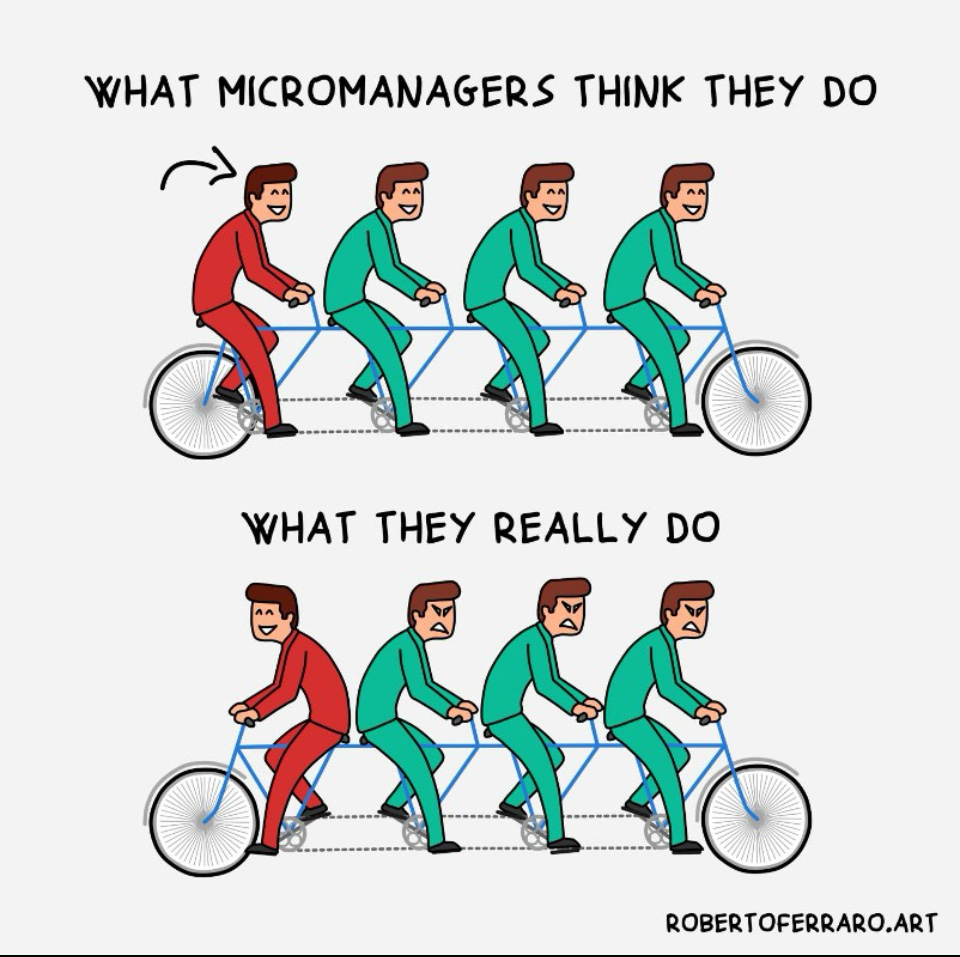
And
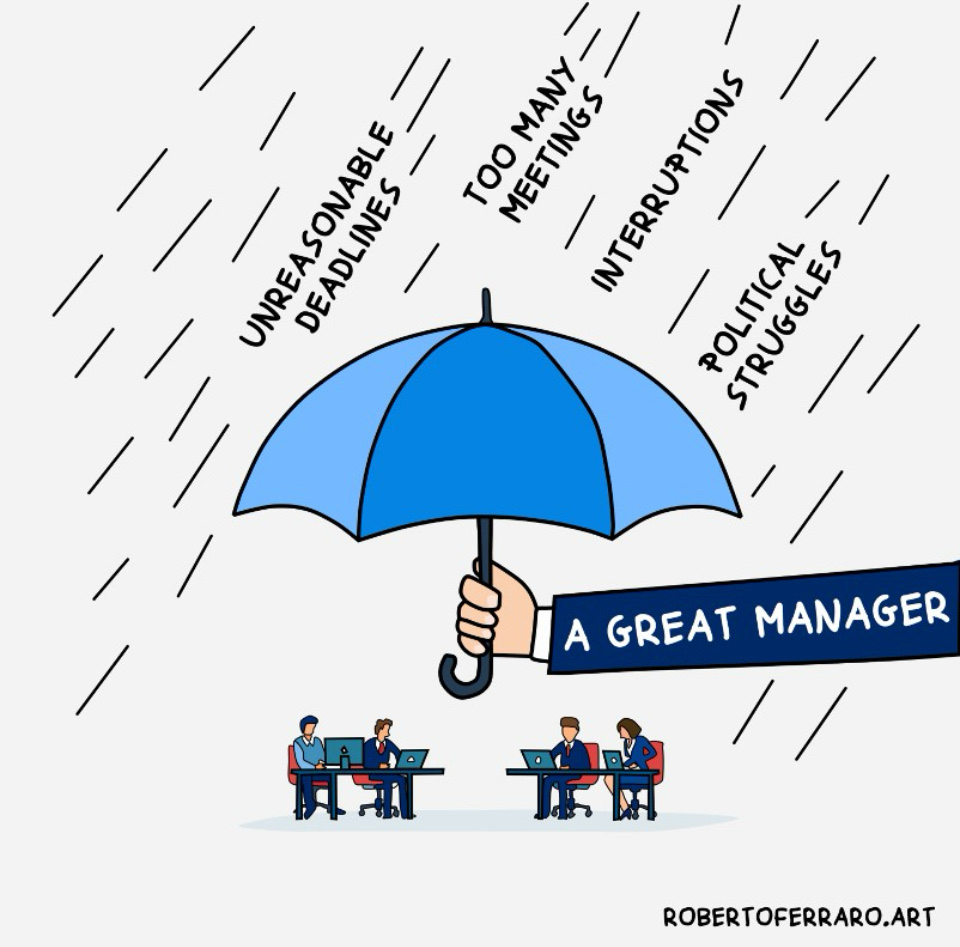
Not Intelligent Enough
What a fascinating perspective and from Aldous Huxley. I don’t recall learning about this while reading his book. How funny we learn what made them famous but not what impelled them to greatness.
It is man’s intelligence that makes him so often behave more stupidly than the beasts. Man is impelled to invent theories to account for what happens in the world. Unfortunately, he is not quite intelligent enough, in most cases, to find correct explanations. So that when he acts on his theories, he behaves very often like a lunatic. Thus, no animal is clever enough, when there is a drought, to imagine that the rain is being withheld by evil spirits, or as punishment for its transgressions. Therefore you never see animals going through the absurd and often horrible fooleries of magic and religion.
No horse, for example would kill one of its foals to make the wind change direction. Dogs do not ritually urinate in the hope of persuading heaven to do the same and send down rain. Asses do not bray a liturgy to cloudless skies.
Nor do cats attempt, by abstinence from cat’s meat, to wheedle the feline spirits into benevolence. Only man behaves with such gratuitous folly. It is the price he has to pay for being intelligent but not, as yet, intelligent enough. ~Aldous Huxley
(Book: Texts and Pretexts )
Overcoming #AI Addiction and AI Detox Strategies

How fast does it take people to get addicted to AI? How many minutes does it take to get addicted? Microsoft reports that all it takes is eleven minutes a day for 11 weeks (11 x 11 is the AI tipping point). They describe it in this way:
A time savings of just 11 minutes a day was the magic number where users started to see value from AI.
To be clear, most people actually saved more time each day: the most efficient users saved 30 minutes a day, the equivalent of 10 hours a month, while the average person saved 14 minutes a day, or nearly five hours each month. But according to our research, 11 minutes of time savings is all it takes for most people to feel like AI is useful—the key to getting a habit to stick.
And as it turns out, 11 is an important number. We also found that 11 weeks is the breakthrough moment…. source
The Problem with Addiction
Although drug addiction is different from AI addiction, since it’s hard to gauge when the former will move into addiction, there may be some similarities. Consider the vulnerable ages for drug addiction:
Studies have shown adults develop habits that lead to addiction early in life — particularly during adolescence. This is a time when many teenagers are first exposed to drugs and alcohol. The brain is still developing during these ages. The parts that control impulsivity, decision-making and executive control are not yet mature; therefore, exposure to illicit substances could stunt development, heightening the likelihood of obtaining a drug or alcohol disorder. source
Is it possible that exposing teenagers older than 13 or 18 will get them hooked to AI? It’s a stretch, right, but it’s too early to know. What parallels could be drawn between AI addiction and some other type, say, social media?

Social Media Addiction
Most of us use social media every day, without ill effect:
social media usage is a habit for most of us. There’s no harm in our habits if they don’t harm ourselves or others. In reality, few of us are addicted to social media. source
The article cited above does suggest six questions to ascertain if you are at risk of developing an addiction to social media. What if those questions were re-written for AI?

Gauging AI Addiction - Seven Questions to Ask
The following questions have been adapted and added to aside from the original six available from the Addiction Center. That said, the questions below have no basis in fact or evidence of any kind. They are a thought experiment of sorts. Ok, with that disclaimer in mind, here are the revised questions:
- Do you spend a lot of time thinking about interacting with AI models or chatbots or planning to use them?
- Do you feel urges to engage with AI models or chatbots more and more?
- Do you use AI models or chatbots to forget about personal problems?
- Have you often tried to reduce the time spent on AI models or chatbots without success?
- Do you become restless or troubled if unable to interact with AI models or chatbots?
- Has your interaction with AI models or chatbots been so frequent that it has had a negative impact on your job or studies?
- Do you rely on AI models or chatbots for companionship or emotional support to the extent that it affects your real-life relationships?
If you find that you are at-risk for AI Addiction, consider these detox strategies.
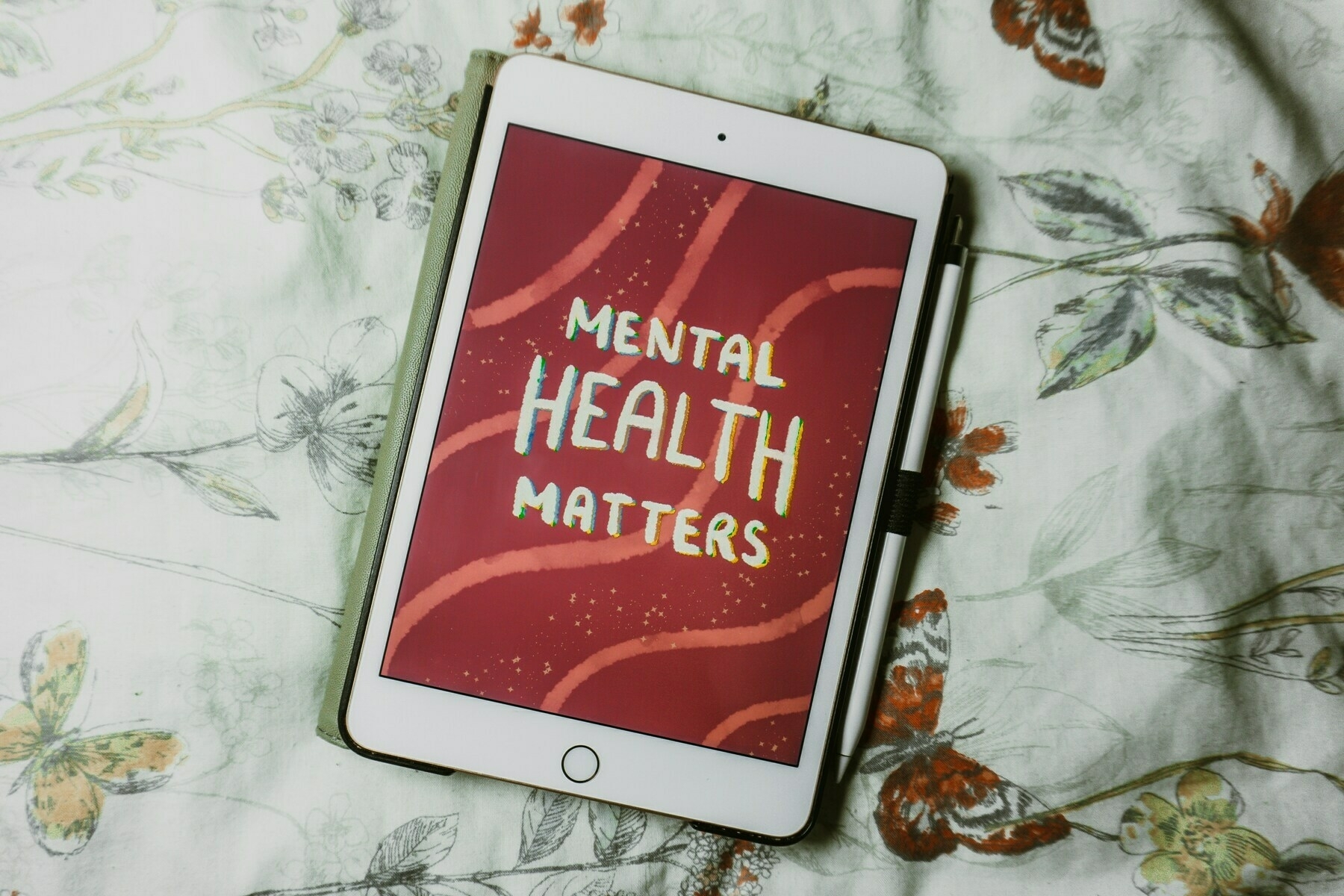
AI Detox Strategies
Here are a few detox strategies to enable you to flush AI out of your system, to reconfigure your brain to stop being so dependent on AI all the time.
- Track Your AI Habits: Use apps to monitor how much time you spend with AI and chatbots, and get insights into when and how to cut back. Set boundaries and establish AI usage goals (e.g. work only or use it instead of Google or Bing search).
- Create a Custom Detox Plan: Analyze your AI usage patterns. Set up detox schedule that fits your daily routine. Make sure to decide on certain times or activities when you won’t use AI. Limit your interactions to specific purposes, not just using AI for everything.


MyNotes: Keep Moving, Avoid Dementia
In World War Z movie, Brad Pitt’s character says to a family in Spanish, “Movimento es vida,” or “Movement is life.” In the midst of a zombie apocalypse, you have to keep moving to stay ahead of the horde coming to consume you.
The same may be true of how to avoid dementia. Consider:
individuals aged over 60 who engage in prolonged sedentary behaviors, such as sitting for more than 10 hours a day, face a significantly higher risk of dementia compared to their more active counterparts. source
3-2-1: Book Banning
Here’s a 3-2-1 on book bans in libraries, which National Public Radio (NPR) reported as increasing in 2023.

Photo by Slav Romanov on Unsplash
The American Library Association reported that:
The number of titles targeted for censorship surged 65 percent in 2023 compared to 2022, reaching the highest levels ever documented by the American Library Association (ALA). The new numbers released today show efforts to censor 4,240 unique book titles* in schools and libraries. This tops the previous high from 2022, when 2,571 unique titles were targeted for censorship. ALA’s Office for Intellectual Freedom documented 1,247 demands to censor library books, materials, and resources in 2023.
As an educator, a book reader from early on, I strongly believe human beings of any age should be allowed to read whatever the heck they want. Reading is an education, a way of gaining experiences beyond the scope of what your current situation allows. Everything I’ve ever read has helped me in some way, even the stuff I read and said, “Yuck, no thanks!”
Here’s a 3-2-1 via Perplexity.ai that certainly made me think a little more deeply about this situation.
3 Ideas
I.
“In the face of escalating book challenges, libraries stand as bastions of intellectual freedom, reminding us that access to diverse ideas is the cornerstone of a free society.”
II.
“2023’s record-setting pace of book challenges underscores a pivotal moment for educators and librarians: the opportunity to reaffirm their commitment to inclusivity, representation, and the right to read.”
III.
“Amidst the surge in censorship attempts, the resilience of libraries and educators in defending access to challenged books highlights the enduring power of community advocacy in safeguarding intellectual freedom.”
2 Quotes From Others
I.Deborah Caldwell-Stone, Director of ALA’s Office for Intellectual Freedom:
“These attacks on our freedom to read should trouble every person who values liberty and our constitutional rights. To allow a group of people or any individual, no matter how powerful or loud, to become the decision-maker about what books we can read or whether libraries exist, is to place all of our rights and liberties in jeopardy.” (Source)
II. Emily Drabinski, ALA President:
“What this data set does not reveal are the people who want books that speak to their lived experience and librarians who want to make books accessible to people who find them relevant. Both are under attack.” (Source)
1 Question For You
In an era where book challenges are surging, how can individuals and communities actively contribute to the defense of intellectual freedom and ensure that libraries remain sanctuaries for diverse voices and ideas?
fREADom
Allow me to share an excerpt from Amanda Gorman’s poem, The Hill We Climb:
We’ve seen a force that would shatter our nation rather than share it. Would destroy our country if it meant delaying democracy. This effort very nearly succeeded. But while democracy can be periodically delayed, it can never be permanently defeated. In this truth, in this faith, we trust, for while we have our eyes on the future, history has its eyes on us. This is the era of just redemption. Read the rest
AI-Powered Health Trackers (PASTOR) #AI #health
Problem
I was a few days ago old when I discovered my smart health tracker also keeps tabs on my location and movements, available to the police. Well, at least I think that it does based on my viewing of the latest CSI: Las Vegas (cue music).

Photo by Dushawn Jovic on Unsplash
Everyone I know is wearing an AI-powered health tracker. This includes wearable devices like Fitbit (recently acquired by Google to much complaint). Where is my sensitive health data going? What I eat, how much I move, whether I got my Flu/COVID shot or not, etc. is all being aggregated by Big Tech (e.g. Apple, Google) in partnership with Big Insurance (e.g. Humana’s Go 365). How do you strike a balance between getting the benefits of AI health tracking and ensuring my personal data stays secure, private?
Alphabet Inc.’s Google announced a slew of initiatives to deploy its artificial intelligence models in the health care industry, including a tool that will help Fitbit users glean insights from their wearable devices and a partnership to improve screenings for cancer and disease in India. via Bloomberg
Amplify
Some of the consequences of AI-powered health tracking without privacy protections in place? Hmm…
- Health data could be misused for commercial gain
- Personal health information is stolen or used for potential discrimination (like insurance company dropping you because you ate too many donuts tracked by your visit to the donut shop and then how many times your hand lifted to your mouth with a donut in it…who knows what AI can do?)
- Lack of privacy protections might kick off an anti-health technology wave because you and I don’t trust them anymore
What other consequences might result?
Story/Solution
Google’s recent announcement about integrating Gemini (it’s AI model) into Fitbit devices sends a shudder up my arm. What “personalized health insights” they provide won’t be as useful as you might hope. The private, confidential health data their AI consumes to tell me, “Stopping at the donut shop once a day” will be worth far more than the benefit.
Still, AI feature’s like this could coach folks like me after analyzing my health data. This is an embryonic first step for AI, so to speak, and who knows what new, action steps I could take with an AI’s insight.
Transformation
Maybe, the insertion of AI-powered Fitbit devices that ALSO have built-in protections for privacy would be helpful. Maybe I’ll be able to get solid coaching on health AND know that I can trust my data will be secure. What’s Google’s motto again? Oh…nevermind.
Offer
What Big Tech needs to offer is more robust security features, and ironclad agreements to safeguard information. Maybe tools like data encryption and anonymization will work.
Response
What do you think about AI-powered health trackers? Is this something you are worried about or curious about? Write a response via Mastodon, email (see link below), or blog it and then let me know what you think via social media. What’s been your experience in this arena? After all, it won’t be long before AI is asking, “Who are you?
MyNotes: Limit Screen Time
Limit that screen time for younger humans, including television time…new research suggests…
a reduction in screen time for toddlers exhibiting sensory processing symptoms, coupled with sensory processing practices delivered by occupational therapists.
The American Academy of Pediatrics (AAP) discourages screen time for babies under 18-24 months and recommends limiting digital media use for children aged 2 to 5 years to no more than 1 hour per day. Source
Free Opportunity for Teachers: LEGO® Build the Change

My colleague, Lindsay Zilly, shared this opportunity…Check it out:
LEGO® Build the Change and Take Action Global are excited to announce open call for registration for the 2023-2024 Institutes.
Accepted educators will have the opportunity to join for a free, month-long educator experience with professional development, resources, and certification.
LEGO Build the Change Cohort this spring! It is a fantastic, free opportunity that is tailored specifically for educators working with students in grades 5-8.
We have upcoming cohorts starting in Spring 2024, with sessions scheduled for April and May. Each cohort is open to 100 educators, so be sure to grab your spot before they fill up!
Cybersecuring Smart Home Devices
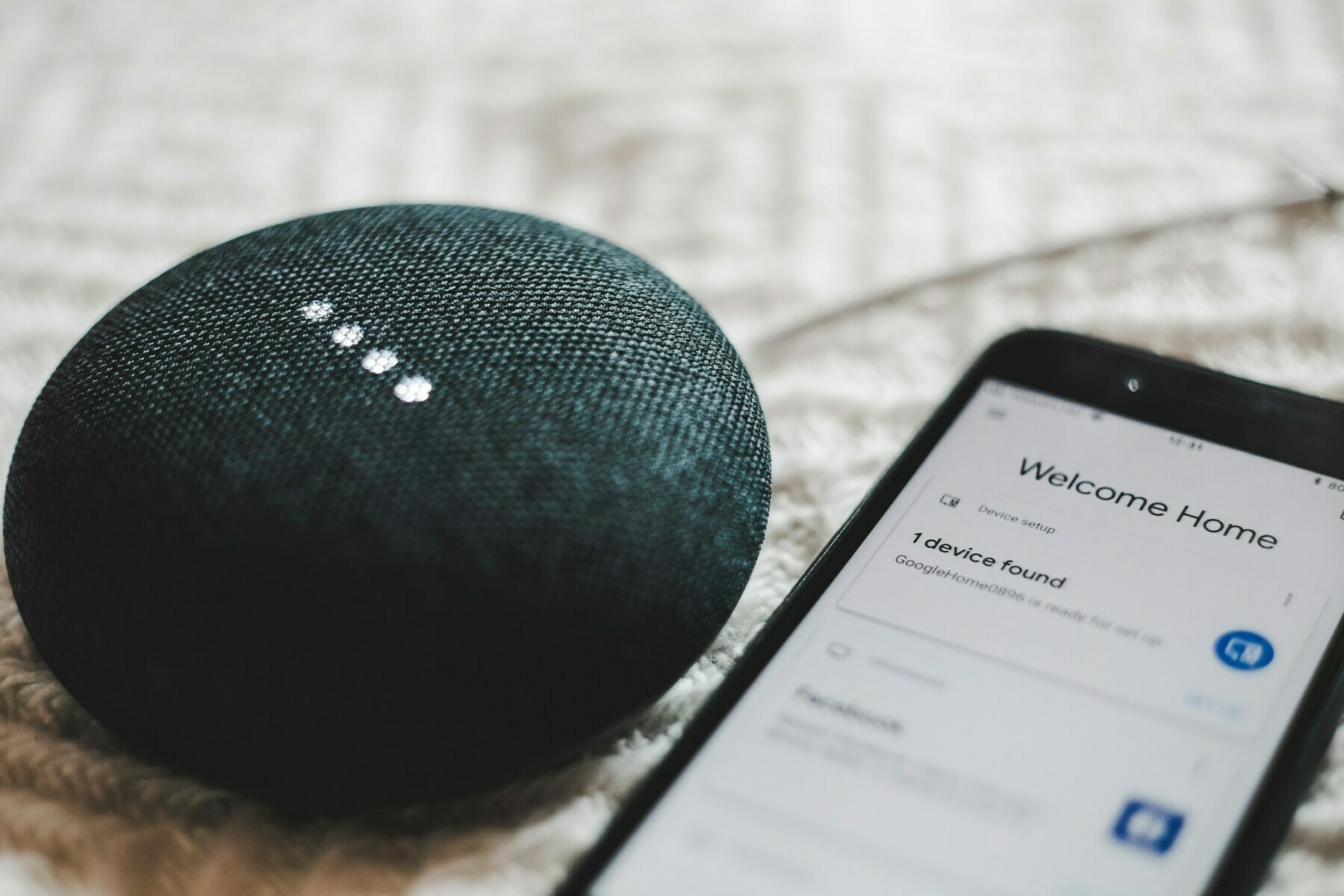
Attention
Smart home devices get compromised every day. Whether it’s your security camera to a baby monitor, your privacy is increasingly at-risk.
Interest
An estimated 672 million households are expected to use smart home devices by 2027. What can anyone do about cybersecurity challenges those households will face? Are you sure you want to let these devices into your home without them being properly vetted and tested?
Desire
Wouldn’t it be amazing to have devices that are secure and that possessed some label or mark? That way, you would know they were secure before you bought them. Instead of buying them then finding out after a breach? A combination of standards and certifications may make that a reality in the future.
The Connectivity Standards Alliance Product Security Working Group Launches the IoT Device Security Specification 1.0: The Connectivity Standards Alliance (“Alliance”) Product Security Working Group is pleased to announce the release of their IoT (Internet of Things) Device Security Specification 1.0, with the accompanying certification program, and Product Security Verified Mark. This groundbreaking initiative aims to establish a unified IoT cybersecurity standard and certification program, providing manufacturers a one-stop solution to certify their devices, enabling them to comply with multiple international regulations and standards more easily. source
Action
I don’t know about you, but it’s time to demand our smart home devices are protected and that they are secure. Only invest in devices that show labels that meet the IoT Device Security Specification 1.0. Your family’s privacy and safety relies on your vigilance.
AIDA: Chaplains in Schools

Attention
“Your teacher said you misbehaved in class. Bow your head and pray for guidance and how you can better behave in class,” said Rev. Johnson, a chaplain at a public school in Texas. Surprised? You shouldn’t be. Can you see public schools where your school counselor has been replaced by a religious chaplain? It doesn’t matter what your family believes, Catholic, Protestant, Jehovah’s Witness, Mormon, or Humanist. This is now happening across the United States or has the potential to happen.
39 percent of schools reported that lack of access to licensed professionals and mental health funding were major roadblocks to their efforts supporting student mental health source
Interest
In Texas, this can already happen. The law has already been passed. It allows chaplains to serve as school counselors. Other states are ready to follow Texas' lead. Since there’s a dearth of school counselors to fill positions in schools, similar laws offer a way out at a price. Can you say the Establishment clause?
Today, what constitutes an “establishment of religion” is often governed under the three-part test set forth by the U.S. Supreme Court in Lemon v. Kurtzman, 403 U.S. 602 (1971). Under the “Lemon” test, government can assist religion only if (1) the primary purpose of the assistance is secular, (2) the assistance must neither promote nor inhibit religion, and (3) there is no excessive entanglement between church and state. Source
Of course, there are other perspectives on this issue.
Desire
While some say it’s about meeting a dire need, given the gaps in available counselors, some says it’s about indoctrinating students in Christianity. What does the insertion of chaplains into schools mean for American democracy at a time when Christian Nationalism is on the rise? Why are laws pushing for chaplains instead of mental health professionals?
Action
Can Americans who believe in the separation of church and state sit idly by? Should we? It doesn’t matter where you fit in on your beliefs, or if you are a student, parent, educator, or community member. It’s critical to push back against the infiltration of religion into public schools. We must protect our children’s access to unbiased, mental health support. Leave religion for private religious schools (which in the interests of full disclosure, I attended PreK-12).
Note: This was an experiment at using the AIDA Model. Did it work?
AIDA Model
- Attention: Start with a hook to grab readers' attention.
- Interest: Provide interesting facts or a storyline to keep them engaged.
- Desire: Build a desire to know more or to follow the story/subject.
- Action: End with a call-to-action, such as encouraging comments, sharing, or tuning in for the next post.
NAACP Ban on States with Anti-DEI Policies

What a disappointing development, if not for sports, for America’s claim to prizing diversity:
Black college athletes should rethink any decision to attend public colleges and universities in Florida, the NAACP advised in an extraordinary letter issued in response to efforts by Gov. Ron DeSantis to weaken diversity, equity and inclusion efforts statewide. . .“From racist voting policies, to unraveling reproductive freedoms and attempting to rewrite Black history, DeSantis has waged war on Black America,” wrote NAACP Board of Directors Chairman Leon Russell and President and CEO Derrick Johnson in the letter. . .A handful of other states have taken aim at DEI programs at universities. That includes Texas, where a sweeping ban took effect on Jan. 1 that eliminates DEI offices, diversity training and most activities based on race, color, ethnicity, gender identity or sexual orientation. Source: NPR as cited in Educational Equity, Politics & Policy in Texas
Not the America I want my children growing up in. Do you?
AI Tools: A Quick Round-Up and a Scope and Sequence 1st Draft
Someone asked me recently for AI resources and a scope and sequence. I couldn’t help but wonder, “Why aren’t you using AI interactively to put together a scope and sequence?” The response shown in this blog entry could be developed a lot more through some interactive questioning with AI, and exploration using several different models.

Photo by Bradyn Trollip on Unsplash
AI Resources
Here are a few shared with me or gleaned from reading Facebook posts. I am still considering them, and haven’t gotten too deep into any of them.
- 152 Best AI Tools Of 2024
- Artificial Intelligence Tools
- aieducator.tools
- www.futurepedia.io
- theresanaiforthat.com
- topai.tools
- www.futuretools.io
- https://docs.google.com/document/d/1mO7TZIq0bTvc-ZkDf0_CqEiCbXHjiTb6l3RZ_Q9V6U/edit
- smarterthangpt.com
- https://everyday-ai.org/resources
As to coming up with a scope-n-sequence, it would have to be aligned to ISTE Standards and keep COPPA in mind. When people ask, “How are you introducing AI to students in K-8, or under 13 year olds?” I’m a bit stymied. First, why would you want to, and second, there’s a lot to learn aside from AI. Wouldn’t it be better to spend time on that first? Of course, it’s silly to think parents aren’t already giving their children, even under 13 year olds, access to AI chatbots. The problem is, the responses are a lot more “intelligent” than Alexa or Siri…and those are going to be improved on, as well.
How do you set a limit for children’s use of AI? As an adult, I am now using AI every day to do or find out stuff.
AI Generated Content Below This Point
Scope and Sequence for Teaching ChatGPT and AI Chatbots in Schools
The following table outlines a detailed scope and sequence for integrating the use of ChatGPT, AI chatbots, Microsoft CoPilot, Google Gemini, and other AI tools into K-12 education. The activities and class projects are designed with a Project-Based Learning (PBL) approach and are aligned with the ISTE Standards for Students and Computational Thinking principles where appropriate. For students under 13, AI tools will be used under the guidance of educators to ensure compliance with COPPA regulations.
| Grade Level | Unit/Theme | Activities | Projects | ISTE Standards | Computational Thinking |
|---|---|---|---|---|---|
| K-2 | Introduction to AI Helpers | - Read stories about robots and AI. - Discuss how AI can help us in daily life. |
- Create a classroom helper robot drawing and describe its functions. | 1. Empowered Learner 6. Creative Communicator |
Decomposition: Understanding what AI can do. |
| 3-5 | AI and Language | - Explore AI with teacher-led demos of ChatGPT. - Practice typing simple prompts. |
- Write a collaborative story with AI assistance. | 1. Empowered Learner 6. Creative Communicator |
Pattern Recognition: Identifying AI responses. |
| 6-8 | AI Research Assistants | - Research a topic using AI tools. - Evaluate the credibility of AI-generated information. |
- Develop a research presentation using AI for data collection. | 3. Knowledge Constructor 7. Global Collaborator |
Algorithm Design: Formulating effective prompts. |
| 9 | AI in Creative Writing | - Use AI to generate writing prompts. - Edit and improve AI-generated texts. |
- Create a portfolio of short stories with AI-generated beginnings. | 6. Creative Communicator 2. Digital Citizen |
Abstraction: Refining AI-generated content. |
| 10 | AI and Data Science | - Introduction to data analysis with AI. - Use AI to interpret data sets. |
- Analyze a local issue using AI to process data and propose solutions. | 4. Innovative Designer 5. Computational Thinker |
Algorithm Design: Using AI for data analysis. |
| 11 | AI Ethics and Society | - Discuss the ethical implications of AI. - Explore AI bias and reliability. |
- Debate the role of AI in future society and create a code of ethics for AI use. | 7. Global Collaborator 2. Digital Citizen |
Algorithm Design: Understanding AI limitations. |
| 12 | Preparing for the AI Future | - Use AI to explore career interests. - Learn about AI in various industries. |
- Develop a business plan or project proposal that incorporates AI technology. | 1. Empowered Learner 4. Innovative Designer |
Problem Solving: Applying AI to real-world scenarios. |
Note: For students under 13, direct interaction with AI tools will be limited and monitored by educators. Instead, the focus will be on understanding AI concepts and potential uses through guided activities and discussions. For older students, direct use of AI tools will be incorporated into projects with an emphasis on critical thinking and ethical considerations. Microsoft CoPilot and Google Gemini can be integrated into research and data analysis activities for grades 6-12, with educators ensuring that students understand how to use these tools responsibly and effectively.
MyNotes: Computational Thinking and AI
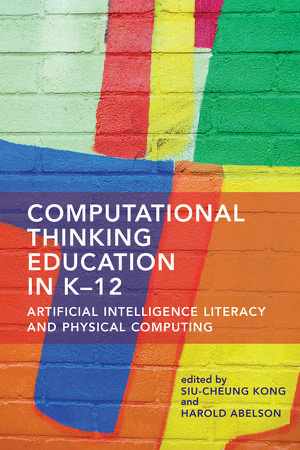
Need something to read? Check out this book, Computational Thinking Education in K-12: Artificial Intelligence Literacy and Physical Computing:
A guide to computational thinking education, with a focus on artificial intelligence literacy and the integration of computing and physical objects.
Get free book | Learn more via MIT Press Direct
MyNotes
from
PREPARING CHILDREN TO BE CONSCIENTIOUS CONSUMERS AND DESIGNERS OF AI TECHNOLOGIES Daniella DiPaola, Blakeley H. Payne, and Cynthia Breazeal
- “Without knowing how these AI systems work, students are unable to make choices about how they would like to inter- act with them.”
- AI is very much part of children’s technology landscape, and it has implications for how they navigate their digital world.
- If chil- dren are able to use AI, they must be able to identify it, know how it works, and understand that they have the agency to change it.
- We need to give students these skills so that they are empowered to decide how they would like AI to fit into their lives.
- To meet this need, we developed a curriculum with three primary goals:
-
- Students should be conscientious consumers of AI.
-
- Students should be ethical designers of AI.
-
- Students should be able to participate in democratic discussions around AI.
- Given the pervasive impact AI is having on the global economy and society, for good or for bad, it is imperative to educate an AI literate citizenry. If we’re to educate and train the next generation of AI makers, we need to empower them with the tools and conceptual frameworks to design these systems ethically.
- Research suggests that isolating ethics from technical content often leads students to perceive ethics as unrelated to their technical studies
- Find resources for the workshop and curriculum authors developed online at [https://bit.ly/mit-ai-ethics](https://bit.ly / mit-ai-ethics)
This article had some great info.